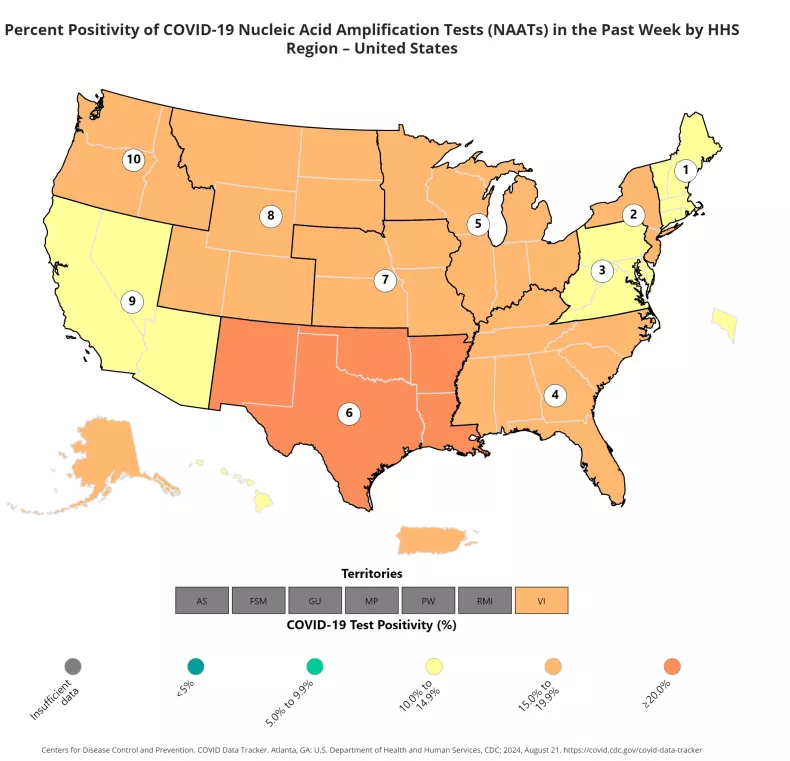COVID Update: Map Shows Highest US Rates As New Variant Spreads

COVID cases continue to rise across the U.S., as the new KP.3.1.1 variant spreads across the country. However, this spread has not been equal across the country, with some states being hit harder than others.
New data released by the U.S. Centers for Disease Control and Prevention reveals that the highest rates of infection are found in five Southern/Southwestern states, with nearly 1 in 4 COVID tests coming out positive across Arkansas, Louisiana, New Mexico, Oklahoma and Texas.
Since the beginning of April, a group of highly infectious Omicron subvariants have risen to prominence across the globe. Nicknamed the “FLiRT” subvariants due to the positions of the specific mutations in their spike proteins, this new class of viruses now accounts for more than 75 percent of infections in the U.S., according to the CDC. KP.3.1.1 itself accounts for more than 1 in 3 cases.
For the week ending August 10, the CDC reported that nearly 1 in 5 (or 18.1 percent) of all COVID tests performed in the U.S.—excluding at-home test results—were coming back positive. However, these positive results were not evenly distributed across the country.
The below map illustrates the distribution of positive tests across the U.S., divided into 10 Health and Human Service regions.
Coming in at number one with the highest percentage of positive tests was region six, which encompasses Arkansas, Louisiana, New Mexico, Oklahoma and Texas. However, while 23.8 percent of tests came out positive in this region, this is a slight decrease from the previous week.
Region seven, which includes Iowa, Kansas, Missouri and Nebraska, reported the second highest percentage of positive tests at 18.8 percent, with region five—which covers Illinois, Indiana, Michigan, Minnesota, Ohio and Wisconsin—coming in close behind at 18.5 percent.
The lowest infection rates for the week ending August 10 were seen in region four, covering Arizona, California, Hawaii and Nevada, at 13.2 percent positive tests, which is a significant (5.8 percent) decrease from the previous week.
The overall rise in infections has followed a surge in COVID-19 detection in wastewater surveys across the U.S., with “very high” levels detected across the country, according to the CDC.
However, while the CDC has reported a steady increase in infections across the U.S. in recent weeks, hospitalizations remain relatively low. From what we have seen so far, the new FLiRT variants, while more infectious, do not generally cause severe symptoms. Still, it is important to isolate yourself from others if you begin to develop symptoms.


